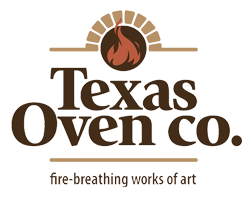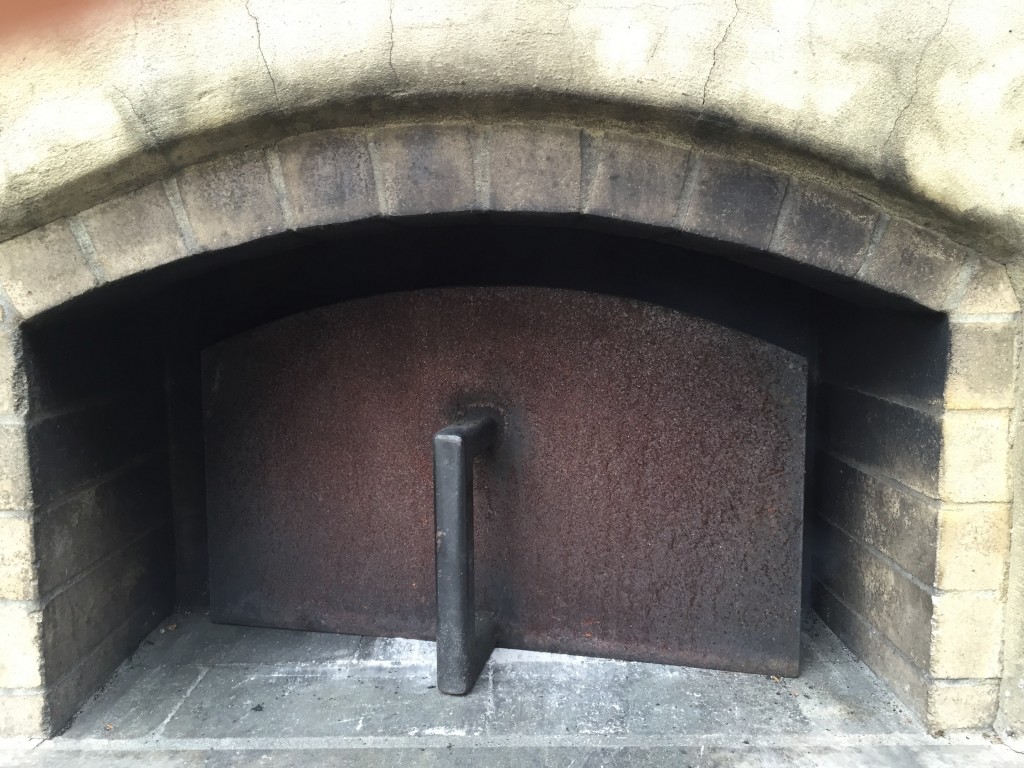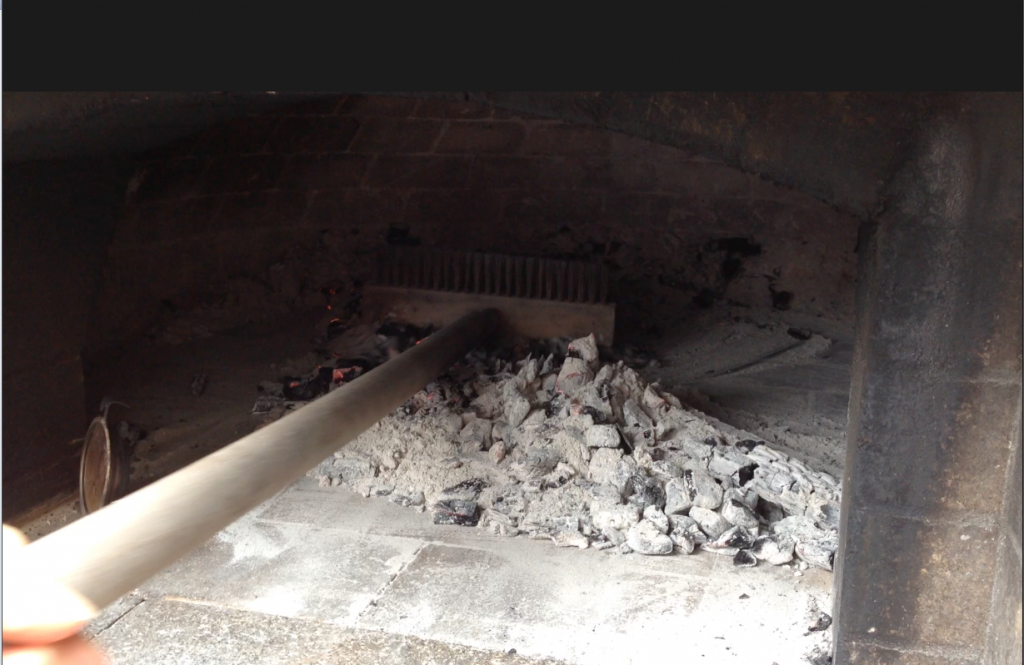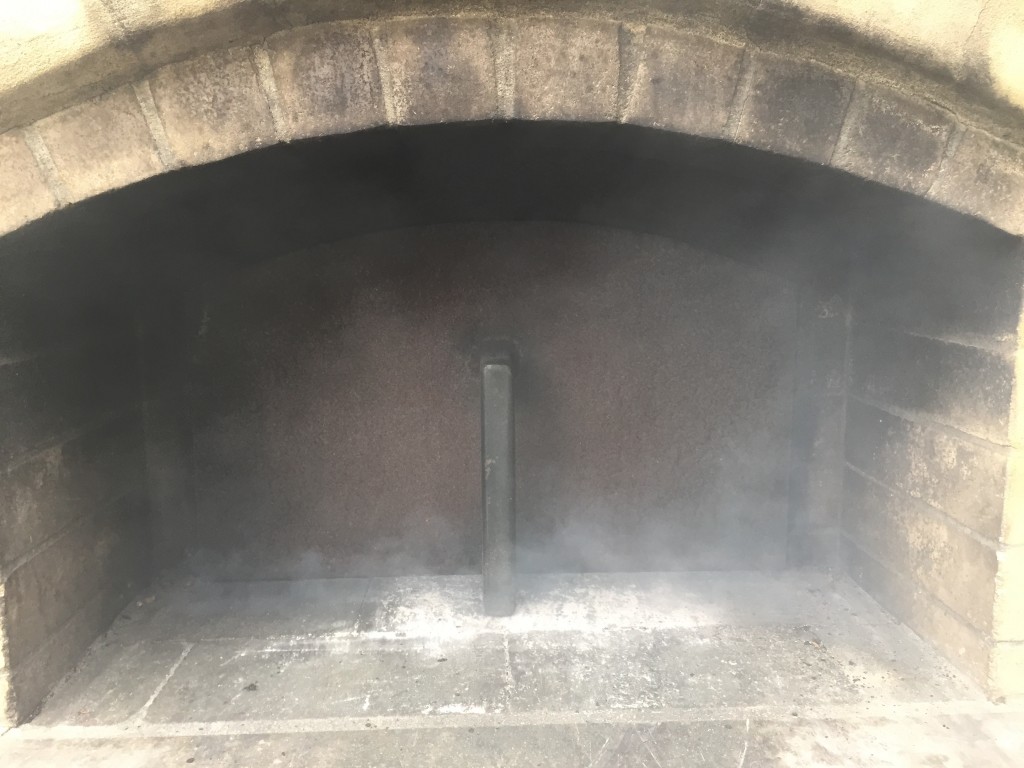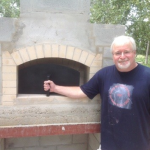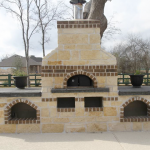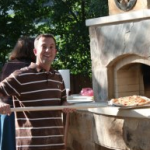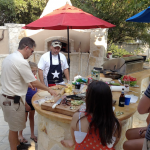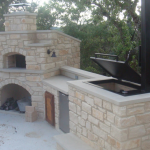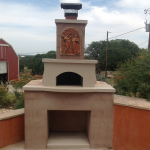Do You Need an Oven Door?
Recently we’ve received questions about the importance of an oven door from folks who have moved into homes with an existing wood-fired oven that doesn’t have a door. I’ve written this blog to answer their questions about the functions of the door and its importance.
Good doors, good ovens
Before going into its importance in managing heat and fire, I want to explain what makes a good oven door – and how the fit of an oven door reveals oven quality. A good door fits the vault opening, and fits tightly enough to keep oxygen form entering the oven. If the oven opening is out of alignment, uneven or crooked, a flat door cannot fully seal the opening. A poor fit between oven and door leaks air, cuts down on fuel burning efficiency and eliminates an important safety guard. That’s why at Texas Oven we carry Forno Bravo oven kits and provide beautifully crafted ovens with doors fabricated from high-quality steel for a tight seal.
Conserving fuel
You can keep a nice fire going without continually adding wood by slowing down how fast the wood burns. As we all know, fire requires three things: fuel, oxygen, and heat. To slow down the rapidity of wood-burning, cut down the supply of oxygen entering the vault. I sometimes get a nice fire going before guests arrive, then slant the oven door across the vault opening to restrict some of the air flow. The oven still absorbs heat, but it requires less wood than a roaring fire. When we’re ready to cook, I pull aside the door, allowing more air in, and add a stick or two of wood to an already stable fire.
Blocking wind
We consider wind direction when advising a customer about locating an oven. It’s better to build the mouth of the oven away from prevailing winds. However, even in the best site layout, there will be occasional gusts of wind that stir up ash and flame. Slanting the oven door across the oven landing, or against the vault opening will redirect the wind and minimize its influence on cooking. For this to work, your oven door handle must serve as a kickstand for the door, as pictured above.
Snuffing flame
To extinguish a dwindling fire (one with little wood remaining to burn), place the door securely across the vault opening to seal off the intake of air. When the oxygen has been exhausted, the fire dies out. It’s safe to open the oven door, remove the ash, or rekindle any remaining live coals. However, if you have a hot fire with significant unburned wood, be careful. If there’s a lot of unburnt fuel and energy remaining, the fire can reignite with a roar if the door is pulled aside. The heat in the oven sucks in a draft of air–just what’s needed to fire up the wood and coals. (See more in our blogs on banking a fire and managing coals and ashes.)
Banking heat
Banking is a technique for saving heat for later use. With a diminishing fire, push the coals and ash to the back of the oven, close the door, and reopen it later or in the morning. The residual heat depends on many factors. In the lower range it is fine for making breakfast eggs and bacon or baking quick breads. With a higher heat and longer burn, banking the coals and shutting the door maintains a higher temperature in the range of baking artisan breads.
Baking
Many professional bread bakers and amateurs alike burn the oven the day before they bake. They bank their fires in the evening so the oven is ready to bake breads that require higher temperatures. Unlike pizza and roasted meats where you normally cook with a fire burning in the oven, bread bakers remove the coals and ash, swab the oven floor, and bake with the heat the oven absorbed. A quality door is essential for retaining heat in the oven, and letting the heat distribute evenly before baking.
Watch the signature Odd Duck bread go into the wood-burning oven (minute 1:45) after it has been cleared.
Creating flavor
The door that fits tightly can be quickly closed and opened over a good fire to create puffs of smoke to add smoky flavor to meats and vegetables as they cook. One time I accidentally created a tiny bit of smoke (having missed a little bit of live coals) when baking some sour dough bread, thinking I’d probably ruined it. However, the taste was wonderful—elusive, yet delicious. See more about intentionally creating a smoky flavor in our blog about using your wood-fired oven as a smoker.
Thwarting critters
Occasionally critters camp out in an oven that’s not in regular use. The door is a great barricade against unwanted visitors. Shelter-seekers aren’t usually a problem if you regularly fire up your oven.
When learning to cook in your wood-fired oven, remember that the oven door and handle are hot. Make it a habit to keep a stack of towels or insulated gloves handy when reaching for the door.
https://www.fornobravo.com/wood-fired-cooking/bread-central/
